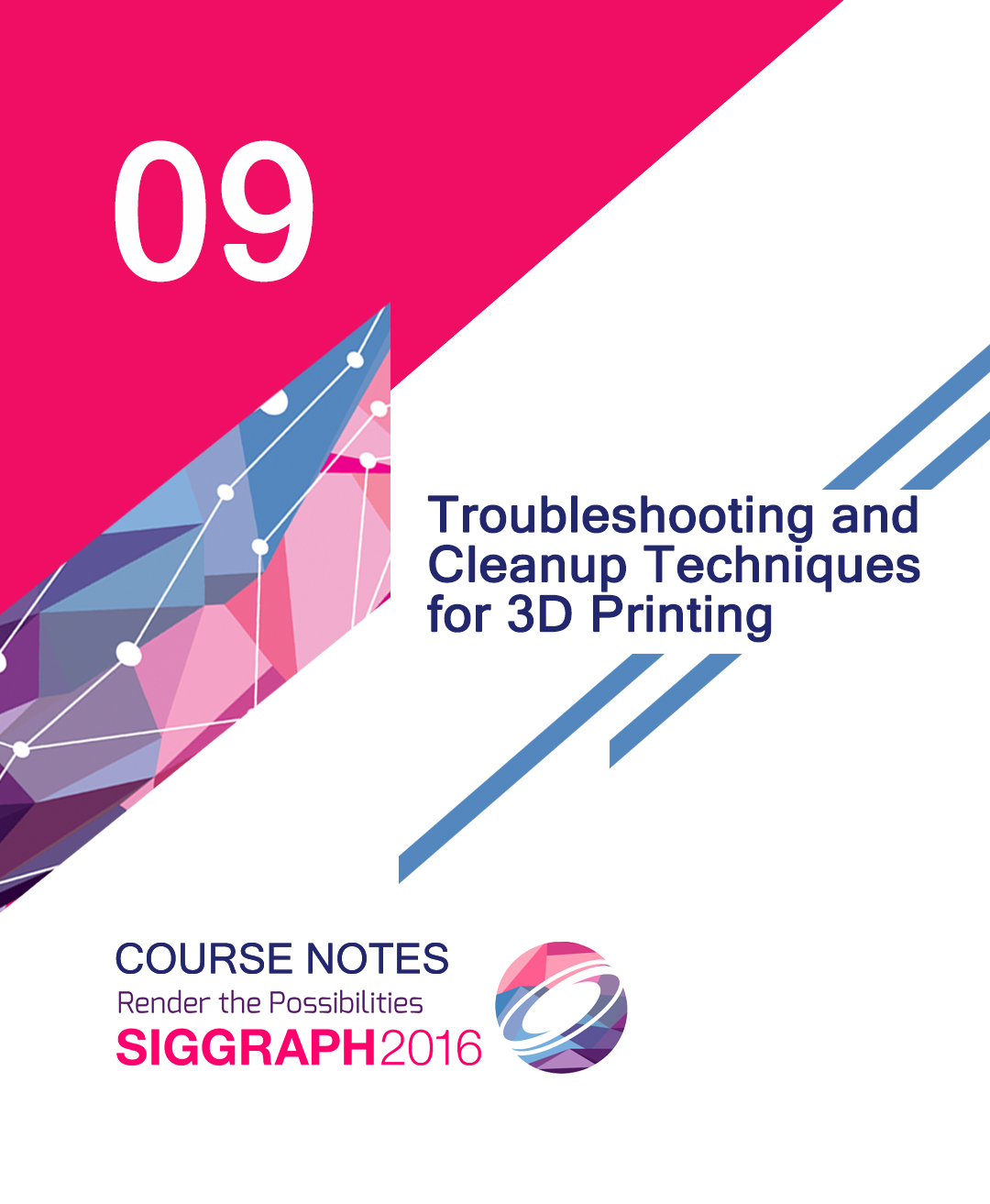“Troubleshooting and Cleanup Techniques for 3D Printing” by Winkel
Conference:
Type(s):
Entry Number: 09
Title:
- Troubleshooting and Cleanup Techniques for 3D Printing
Course Organizer(s):
Presenter(s)/Author(s):
Abstract:
Prerequisites
General knowledge of Autodesk Maya or a comparable 3D software or CAD software package.
Level
Introductory
Who Should Attend
Anyone interested in learning how to prepare their models or design work for 3D printing.
Description
Recent years have ushered in a golden age of 3D printing. The scope and capabilities of affordable 3D printers have allowed a creative renaissance to emerge across the landscape of content creation and down to the consumer level. The only real limit facing creators is their own understanding. Every manufacturer wants customers to get a solid print, every time. Every vendor wants to satisfy client orders, every time. But while most manufacturers include turn-key solutions for geometry errors with their printers, and vendors offer cleanup services for a price, both recognize that the most common weak link in the production chain from idea to reality is an uninformed creator.
In the process of working a product from ideation to finished product, cleanup has never been sexy. This course aims to improve the production process. It begins by illustrating how to identify the most commonly encountered geometry problems and exploring how these problems manifest across a range of 3D modeling and CAD software packages. Sample files allow attendees to explore real models in search of these problems and show how to leverage the tools and user interfaces within most software platforms to isolate problems, then apply tools and workflows to fix them. Attendees also learn:
• How to stage and submit their cleaned models across a range of 3D printers and print management software packages.
• How to output their models and prepare them for printing or delivery to a print vendor.
• Best techniques for maintaining clean contours, maintaining scale, and creating stable surface features.
• How to achieve the ideal orientation for efficiency and optimum print quality.
• How to manage large print runs and best practices for maintaining equipment.




